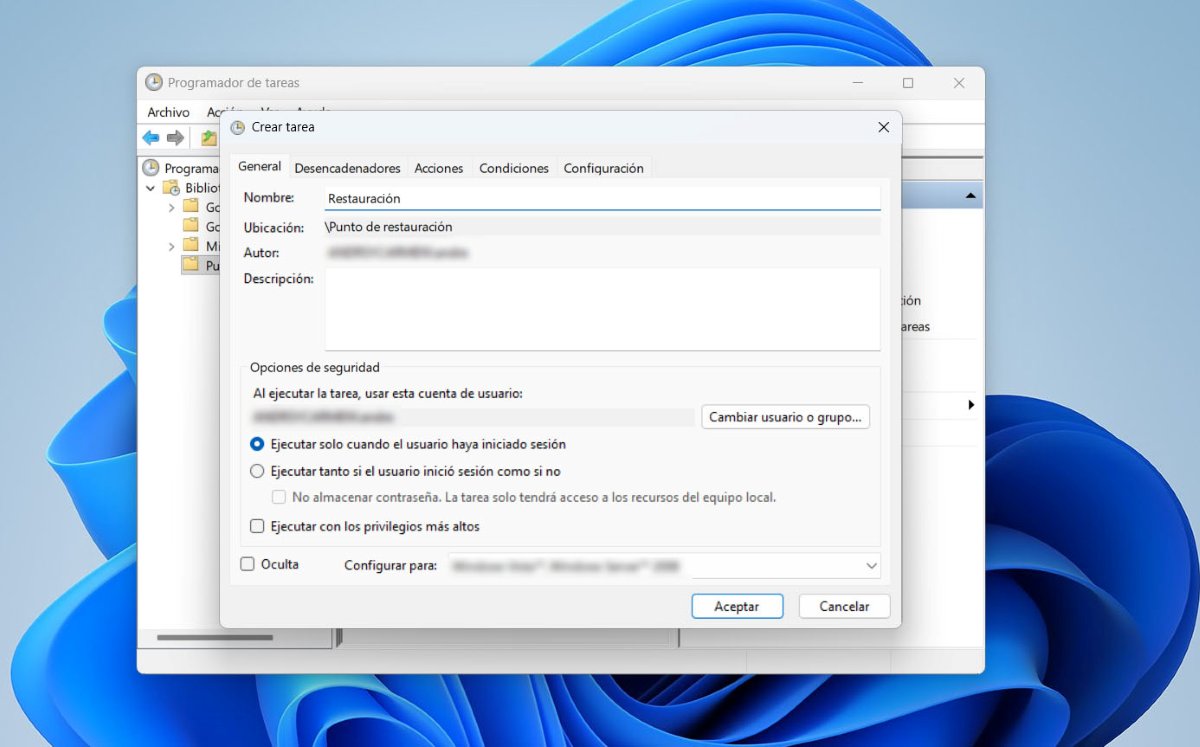
Want to protect your system before making a major change? Creating an automatic restore point before each Windows update is a great idea. This practice allows you to easily revert errors or failures, keeping your computer safe and stable. Let's see how. Configure Windows to create these restore points and what are the advantages of doing so.
Here's how you can create an automatic restore point before each Windows update

Create an automatic restore point before each Windows update It provides you with a reliable safety net.Doing so enables the possibility of reverting errors, protecting configurations, and avoiding downtime due to unexpected failures. It is a preventative practice that improves system stability and it gives you greater control over it.
To create an automatic restore point, You need to enable System ProtectionThis option is disabled by default in Windows. Therefore, it will be necessary use the task scheduler To create the restore point that will run automatically, follow these steps.
Enable system protection to create an automatic restore point

Step number 1 to create an automatic restore point is Enable System Protection (or verify that it is activated). To do this, follow the steps below:
- Click the Windows Start button and type “Create restore point"and select that option."
- In the tab “System protection”, select the system drive (C:) and click on "Set up".
- Choose "Enable system protection"and adjust the disk space usage for restore points if you wish."
- Finally, click on Apply and later OK.

If you want to create a restore point right then, click on CreateIn the name field, you can enter the date you're creating the restore point, wait for it to complete, and you're done. With this, once you enable system protection, an automatic restore point will be created before each Windows update, in theory.
Configure the task scheduler

Once system protection is enabled, it's time to Configure the task to create an automatic restore point Schedule it to run at a time of your choosing. To do this, follow these steps:
- Click the start button and search Task Scheduler.
- Now right click on “Task Scheduler Library"And select"New folder".
- Give the folder any name you want, it could be (restore point).
- Now right-click on the folder you created and select Create task and in the name write “Restoration”.
- Next, select the option “Run whether the user is logged in or not” and “Run with the highest privileges”.
- Next, select the tab “TriggersClick "New" and then "Start task," and choose "According to a schedule." In Settings, choose how often you want the restore point to be created and click "OK."
- Now locate the tab of “Actions” and select "New" - Start a programIn the program or script, write powershell.exe and in Add arguments copy this command: Checkpoint-Computer -Description "Point before upgrade" -RestorePointType "MODIFY_SETTINGS" and click “OK”.
- Finally, go to the tab Terms and conditions and uncheck the option that says “Start the task only if the computer is connected to AC power” and click OK.
Advantages of creating an automatic restore point
Creating an automatic restore point before a Windows update has many advantages. Above all, when you usually make changes to the system which can go very well or very badly. These restore points are like an escape plan, allowing you to return to a previous state of the system where there were no errors. Here are the main advantages:
- Protection against problematic updatesIn case an update causes conflicts with drivers, software, or settings, a restore point allows you to revert the system to its previous state without losing personal files.
- Quick and hassle-free processApplying a restore point is quick, you don't have to reinstall Windows from scratch, and it's very safe.
- Preservation of settings and customizationsWhen restoring, registry settings, drivers, and system settings are recovered.
- Automated preventive routineBy scheduling regular restore points, you can keep your computer clean and optimized for your workflow.
- Diagnostic time savingsIf something goes wrong after an update, you can simply restore and continue working without spending time analyzing what the specific error was.
- Blockages or loss of access are avoided.Some update errors can prevent the system from starting, which The icons on the screen take a long time to appear. or block essential functions. A previous restore point will allow you to fix these problems more easily.
- Restore points do not affect your personal filesWhen you restore your system using a restore point, your documents, photos, and personal files are not deleted. Only system settings and installed software are reverted.
What if you want to manually restore the system to a previous point?
We've already explained how to create an automatic restore point, but do you know how to restore a manually created point? Apply a manually created restore point in Windows 11, follow these steps:
- Open the Start menu and type “System Restore”, then select “Create a restore point".
- In the System Properties window, click on “System Restore".
- Choose "Choose another restore point"and mark the spot you created."
- Click on Next and later Finalize.
- Confirm that you want to start the restore. The system will restart and apply the selected restore point.
Create an automatic restore point before each Windows update It's a smart strategy that will help you maintain system stability.This preventative practice allows you to easily revert errors, protect important settings, and save time. Doing so will increase your sense of security and prevent unpleasant surprises.
Since I was very young I have been very curious about everything related to scientific and technological advances, especially those that make our lives easier and more entertaining. I love staying up to date with the latest news and trends, and sharing my experiences, opinions and advice about the equipment and gadgets I use. This led me to become a web writer a little over five years ago, primarily focused on Android devices and Windows operating systems. I have learned to explain in simple words what is complicated so that my readers can understand it easily.